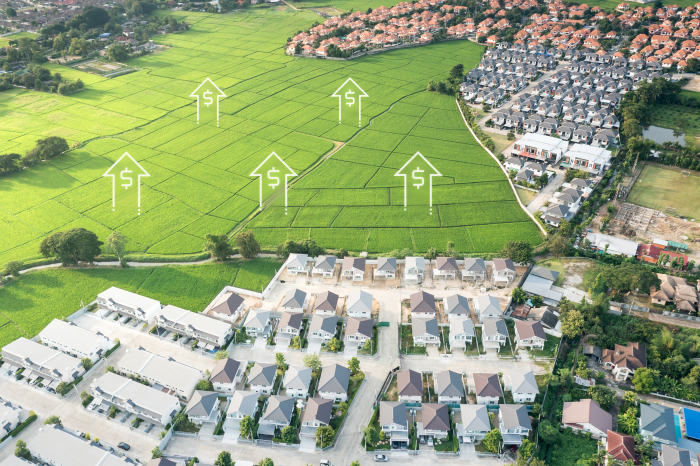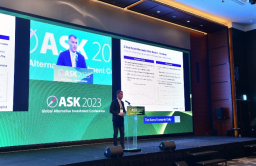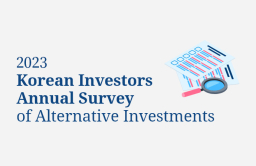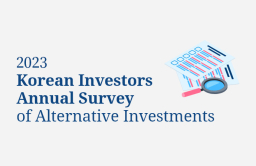-
KOSPI 2577.27 -2.21 -0.09%
-
KOSDAQ 722.52 -7.07 -0.97%
-
KOSPI200 341.49 +0.02 +0.01%
-
USD/KRW 1396 -2.00 0.14%
Private real estate debt shines on banks' financing gaps: Savills
Private debt
Private real estate debt shines on banks' financing gaps: Savills
Living & industrial will drive growth; returns from financing traditional asset classes will also underpin real estate debt
Jun 22, 2023 (Gmt+09:00)
long read
News+

More global investors are turning to the private debt market as bank loans are getting tougher under stricter lending regulations. Among a range of strategies, real estate debt will generate opportunities and provide liquidity to the market, experts from DRC Savills Investment Management said.
The logistics and living spaces look most attractive on a fundamental basis, both have been resilient over recent years with strong rental growth. Within the living space segments, multifamily and student housing draw market attention as they benefit from long-term undersupply dynamics and increasing residential mortgage costs, Dale Lattanzio, managing partner of DRC Savills IM and Steve Willingham, head of DRC Savills Investment Management Asia said.
The following is a conversation between Lattanzio and Willingham.
▲ Why do investors need to focus on real estate debt in the current market environment?
Dale Lattanzio: Over the past year, global economies have had to contend with levels of inflation far in excess of their own central bank targets. In response, the world’s major central banks have consistently hiked rates to curb this increasing inflationary pressure.
As central bank interest rates have increased, credit conditions for new bank lending have tightened in both the US and European Union, a trend that we expect to continue. Tightening of credit conditions for new bank lending will result in a greater need for alternative lenders to provide liquidity to the market, making way for real estate debt investments.
Steve Willingham: The macro picture Lattanzio lays out is certainly paving the way for alternative sources of debt and income streams for investors. Put simply, real estate debt offers three key characteristics that are extremely compelling to investors, not only in Asia but across the world more broadly.
Firstly, and most obviously, the floating rate nature of real estate debt means that it offers investors inflation protection/linked cashflows. Secondly, the physical nature of the real estate underpinning this debt offers attractive downside protection. Thirdly, a shorter and more diversified duration than other debt or fixed-income instruments.
Lattanzio: Moreover, the current volatility in transaction volumes and asset values is creating a funding gap across the market for existing owners who need to refinance their loans, and for investors making acquisitions, who will experience lower leverage appetite from traditional lenders. This environment leads directly to opportunities for alternative lenders with committed capital who offer strong risk-adjusted returns for first mortgage credit.
Willingham: Finally, there is a huge market out here for investors to take advantage of. Banks still dominate global commercial real estate lending and with the pressure on traditional lending, investors globally have the opportunity to tap into a $5.6 trillion market in the US alone, according to Mortage Bankers Association data in March 2023. Alternative real estate private credit managers have the ability to select high-quality transactions from this deep pool of opportunity.

▲ What compelling investments are out there?
Lattanzio: The withdrawal of liquidity from traditional lenders, offers real estate investors the ability to invest in high-quality, first-mortgage whole loan debt with strong sponsors at excellent risk-adjusted returns.
Across all the markets in which we operate this whole loan strategy is delivering opportunities with potentially strong returns and downside valuation protection.
Willingham: In addition to the whole loan space, we are also seeing opportunities in both senior and high-yield strategies. The key here is that now the market is more mature than ever, it offers investors the ability to tailor their portfolios to have exposure across the real estate debt capital stock spectrum, to fit their individual risk and return targets.
▲ Which sectors offer opportunities right now?
Lattanzio: Our focus is very much on quality, and this largely dictates our investment strategy. However, the sectors which tend to offer desirable characteristics are those with proven resilience and sustainable value growth flowing from economic and demographic megatrends.
The logistics and living spaces currently look most attractive on a fundamental basis. The industrial & logistics space has proven resilient over recent years, with strong rental growth. And within the living space, we are also seeing interest in multifamily and student housing which benefits from long-term undersupply dynamics and increasing residential mortgage costs.
Willingham: We are also consistently looking for opportunistic investment opportunities. Despite the lasting impact of the COVID-19 pandemic, we still see opportunities in prime office space with best-in-class locations and environmental, social and governance (ESG) credentials. Hospitality and non-discretionary retail are also areas where we can achieve strong returns even when funding low-LTV loans.
Examples in our current pipeline include 50-55% loan-to-value on prime hotel assets and inner-fringe city offices in Sydney and Melbourne. Whilst the fundamentals of the sectors are less attractive, the level of equity cushion acting as a first loss piece ahead of our loans is very substantial, offering a strong risk-adjusted return.

▲ What are particularly attractive regions?
Lattanzio: More than focusing on particular regions, we use the capital stack as a starting point, first establishing which parts are offering relative value. As we have mentioned, whole loan strategies have delivered a combination of strong returns and a conservative equity cushion, allowing for rates of return significantly in excess of net property yields.
Willingham: Within this construct, there are markets that stand out relatively to others. For whole loans, Australia/New Zealand and Europe, including the UK, are particularly attractive. Investments in these regions are providing great returns as a result of increasing benchmark rates and widening spreads over the benchmark, as banks withdraw liquidity from the commercial real estate debt market.
▲ What is the role of DRC Savills IM and how does it benefit from the current market?
Lattanzio: DRC Savills IM was one of the first players in the alternative lending market, and we are proud of our long-term, proven track record across multiple market cycles. We have a proven, consistent, and rigorous approach to underwriting and execution, in-house asset and risk management, and research capabilities across different regions/markets and property types.
Willingham: Furthermore, its global presence and on-the-ground relationships with key borrowers across all regions mean that we are able to deliver differentiated debt origination across the entire capital spectrum. We are rapidly growing our capabilities in the US and Asia, with significant progress already being made in Australia and the APAC region more broadly.

▲ What can we see ahead of the markets that may destabilize the debt market?
Lattanzio: The key risk is the macroeconomic environment and pressures on the profitability and growth of the companies that occupy properties.
This links to the need for lenders to focus on “second life” for assets we take as security; meaning, that the properties must have a sustainable and economic rental life beyond the occupation of the current business.
Willingham: Unlike most of the non-bank sector, we are also wary of Land and Land sub-division financing. The asset class is heavily exposed to construction cost inflation, rising interest rates and housing market volatility, making it less attractive in current market conditions.
▲ Do further increases in interest rates impact these thoughts?
Willingham: Increases in interest rates impact the ability of borrowers to service debt and will increase the level of impairments in the market.
However, for new investment strategies, the higher cost of interest will also reduce the amount of leverage that traditional lenders can deploy, particularly in highly regulated markets such as Australia. This will lead to new opportunities to profitably deploy capital.
Lattanzio: Interest rates have had a significant impact on the expected supply of loans from traditional bank lenders. With a high volume of loans due to mature in the coming years, this will lead to a significant ‘funding gap’. For example, our analysis indicates that over the next three years, the Australian market will have a funding gap of A$30 billion. Over the same period, Europe’s funding gap will be €51 billion. Specialist lenders such as us are well-positioned to deploy capital in this market environment.

Prior to co-founding DRC Capital, he was managing director at Duet Private Equity Ltd. and previously a managing director at Merrill Lynch & Co.
He has an MBA from Columbia University and a BA in Economics from Dartmouth College. He is the outgoing Chairman of the European Commercial Real Estate Finance Council.

Before joining DRC SIM in 2022, he was global head of real estate finance at HSBC with responsibility for the bank’s global portfolio of secured real estate financing to international clients across Asia, Europe and the US. Prior to this, he was fund manager of BlackRock’s European opportunity real estate investments.
Jihyun Kim edited this article.
More To Read
-
Jun 01, 2023 (Gmt+09:00)
-
May 26, 2023 (Gmt+09:00)
-
May 17, 2023 (Gmt+09:00)
-
May 03, 2023 (Gmt+09:00)
-
May 03, 2023 (Gmt+09:00)
-
Apr 26, 2023 (Gmt+09:00)








